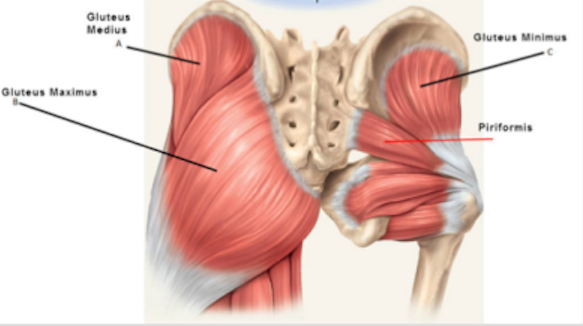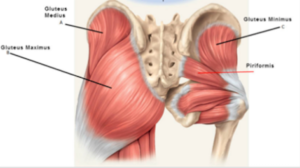by admin | Oct 21, 2021 | Uncategorized |
Your body is under constant pressure from its external environment and what’s going on inside it. And this pressure is necessary – it keeps your blood circulating and your digestion moving. In relation to having good ‘core function’, the pressure we’re interested in is Intra Abdominal Pressure (IAP). Anyone who experiences core and pelvic floor issues tends to have habits that place excess pressure in the system.
So, just where is this pressure?
The deep muscles of your core encase the abdominal cavity. Their job is to house your visceral organs: the liver, stomach, spleen, digestive tract, kidneys, and pelvic organs. There’s pressure within the abdominal cavity, a bit like an inflated balloon – this is the IAP.
How does the core manage IAP?
The main job of your core function is to manage IAP on a daily basis.
When you breathe in the diaphragm contracts and flattens downwards, this increases IAP. In order to maintain IAP, the pelvic floor and abdominal wall muscles lengthen under load just like the bed of a trampoline does when someone lands on it.
When you breathe out the diaphragm returns to its resting position creating a recoil on the pelvic floor and abdominal wall muscles returning them to their resting position too.
This process maintains consistent pressure within the abdomen. It also helps it to manage coughs and sneezes amongst many activities that increase the IAP. If all the parts aren’t working well together then we many notice that the management needs some improvement when put under high pressure.
What factors can improve IAP management?
Mobility: Stiffness, tension, and tightness anywhere in the body will have a knock-on effect elsewhere. When we lack movement in one area, it will be taken from another. Movement in the pelvis, spine, and ribcage are essential to good core function.
Stop Belly Breathing: The abdominal muscles are designed to assist breathing. If the tummy muscles are ‘doing’ the work, they are creating more IAP. Just think what happens to the air inside a balloon when you squeeze it. This pushes pressure forward or down which long-term can compromise the muscles and supporting ligaments, tendons, and fascia.
Stop Holding Your Stomach In: Resisting the natural movement in the abdomen increases IAP. This time restriction forces the pressure downwards on to the pelvic floor. The core is also designed to work reflexively. Holding the stomach in stops this from happening. Without reflexive ability we cannot have core stability.
Improve Postural Patterns: The core works best when the diaphragm and pelvic floor are positioned directly above and below each other. Often our postural habits change this alignment.
Core Engagement Strategy: How we engage our core also has an impact on how pressure is managed. For a variety of reasons, we may have developed the habit of bulging, bracing, or bearing down as a strategy to support the core. All of these direct the pressure where we don’t want it. Teaching the core to work more reflexively will support core function.
The power of the breath when restoring core function
Good strength and flexibility of the pelvic floor and abdominal wall muscles are essential in restoring core function.
It’s important to be aware that most training techniques generate greater IAP when performed. If IAP is not managed well at optimal pressure, performing ‘core strength’ exercises such as sit-ups or planks can make your symptoms worse.
The best way to restore good core function is to start with the breath. This will help manage IAP and can make a big difference to resolving symptoms of core dysfunction.
In our ‘Do More 4 Your Core’ programme we’ll help you create optimal breathing patterns that improve muscle tone through a training method that incorporates a specialised breathing technique to reduce the IAP.
To learn more about the courses I run, or to simply ask a question, feel free to email me at info@ormskirkpilates.co.uk.
by admin | Oct 19, 2021 | Uncategorized |
Improving ‘core strength’ is one of the main reasons why folks get in touch with me. Health professionals often advise their patients to ‘strengthen their core’ as part of their pain relief rehabilitation. But I often feel a there is a disparity between what I understand as being ‘the core’, and what is considered to be ‘core strength’.
Pop ‘core strength’ into Google images and you’ll see lots of pictures of people with low body fat and developed muscles, usually doing sit up and planks.
Don’t get me wrong, these are great exercises, but they might not be the right exercises if you are experiencing any pain and discomfort, or pelvic floor dysfunction. That’s because when you experience these uncomfortable symptoms the ‘core’ is not functioning well, it’s NOT because the ‘core’ is inherently weak.
So, I’m making it my mission to spread the word about what good core function actually is so you can get the right help for you to support your body.
So, let’s take a quick look at what good core function really is:
Core function is the capacity for the constituent parts of the ‘core’ to work together to perform the natural chain reaction of expansion (inhaling) and compression (exhaling) optimally.
The 3 main constituents to focus on are:
- Your respiratory diaphragm. This is the large muscle that’s situated at the base of your lungs, its job is to give us the power to breathe efficiently.
- Your Transverse Abdominus. This is the muscle that wraps around your middle, a bit like a corset.
- Your pelvic diaphragm. This is just a posh word for the muscles of your pelvic floor.
When these guys work well together the ‘core’ works reflexively, i.e. it turns on and off as needed to support your body as you go about your daily activities. All these components are driven by the breath. One of the ways to develop good core function is to address breathing strategies.
The more you focus on the 3 main constituents of core function the better they will work together. And when they work together well, they’ll help you with these everyday functions:
- Better breathing = increased feelings of wellbeing.
- Allowing movement of the trunk.
- Spare the spine from excessive loads.
- Transfer forces between the upper and lower parts of the body.
- Facilitate better digestion.
- Enable the expulsion/excretion of waste substances.
- Support and protect the internal organs of the body.
To learn more about the course I run, or to simply ask a question, feel free to email me at info@ormskirkpilates.co.uk.
by admin | Oct 12, 2021 | Uncategorized
For anyone who has ever experienced an embarrassing leak, no doubt you’ll have heard about pelvic floor exercises – ‘squeezing’ the pelvic floor muscles to contract them. And when I talk of embarrassing leaks, I mean the ones that happen when we sneeze, cough, jump, and the like.
Performing pelvic floor exercises can improve symptoms and as such can reduce symptoms. However, for some, pelvic floor exercises alone are not effective and may even exacerbate the problem. It doesn’t mean that there is no hope it just means that a different approach is needed and its one that will benefit everyone on a lifelong basis.
Why Pelvic Floor Strengthening isn’t for everyone
Generally, it’s assumed that leaks are due to a lack of strength. But did you know a muscles strength can be reduced by when a muscle becomes either overactive or underactive?
Underactive pelvic floor muscles are unable to contract sufficiently to perform their supporting role, whilst overactive pelvic floor muscles are unable to relax or have the capacity to co-ordinate contraction of the muscles i.e. they contract when needing to relax and vice versa. An optimally working muscles needs the capacity to work and rest.
Pelvic Floor Exercises can be very beneficial in creating more support in underactive pelvic floor muscles. Progressively working the muscles can lead to increase strength, like you might gradually increase the weights in the gym.
However, an overactive muscle is already doing far more than it needs to. It’s like trying to do a bicep curl when the elbow is already a bent as it can go. Doing exercises from this position gets really tiring, really quickly. So, to do more is most likely goingto be of no benefit or make things worse.
Be in it for the long haul
If you’ve benefited from doing pelvic floor exercises, that’s great but you may need to consider that:
1. You’ll need to keep doing them indefinitely. The adage ‘use it or lose it’ most definitely applies here.
2. Our bodies change as we approach different life stages such as the menopause which may have an impact on the increase the amount of kegels you do to experience the same benefits.
Why pelvic floor exercises are only part of the picture
The pelvic floor muscles perform their job in synergy with the other ‘core’ muscles. The pelvic floor should be a mirror image of the respiratory diaphragm. Addressing the how we are breathing can have a big impact on the improvement of pelvic floor function.
Did you know that your big toes are directly connected to your pelvic floor. So, how the feet work will impact how well the pelvic floor works. Bunions anyone? This is just one example of how other areas of the body impact on the pelvic floor. How our body’s ‘stack up’ can have an impact on resolving pelvic floor ‘weakness’.
Strategies that we’ve developed to use our ‘Core’ during life, movement and exercises have an impact on our pelvic floor. Bulging, bracing and bearing down into our abdomens are very common ways we engage our core that increase pressure downwards. Pelvic floor muscles will add some support back in but nowhere near as much as your body will use the habits its learnt.
The Pelvic floor doesn’t work in isolation or just rely on the strength of its own muscles. Pelvic Floor exercises train the muscles in isolation. In a nutshell you are training them to work on demand under consciously control. We need pelvic floor muscles to work when we need them, for instance when we cough or sneeze. Movements, such as Squats, that integrate the pelvic floor are far more effective at working the muscles than doing them in isolation.
In essence pelvic floor exercises do have their place for some but to truly reduce or resolve symptoms of pelvic floor weakness we need to look at the whole body as the whole body and integrate it’s activity on a daily basis through our movements. To do that we need identify the areas that may be contributing to the symptoms i.e. create more facilitative breathing patterns, core engagement strategies and alignment. We need to identify our movement blind spots (i.e. learn our bad habits to keep an eye on them), introduce more movement in some areas and create strength and more supportive movement patterns in others.
Are you ready?
Our ‘Do More 4 Your Core’ Programme has been created to help you achieve optimum core support, reduce aches and pains, help you move better, and stop you worrying every time you feel a sneeze coming on!
The next course starts on Thursday 4th of November. Only 6 spaces available. Book now to secure your spot.
To learn more about the courses I run, or to simply ask a question, feel free to email me at info@ormskirkpilates.co.uk.

by admin | Oct 12, 2016 | Uncategorized
 It’s getting to that time of the year again. The mornings aren’t as bright, evenings are drawing in, the days are getting shorter and winter is on its way. Some days you might only see the daylight through the office window, or for an hour at lunchtime. Apart from being a little bit depressing, (more…)
It’s getting to that time of the year again. The mornings aren’t as bright, evenings are drawing in, the days are getting shorter and winter is on its way. Some days you might only see the daylight through the office window, or for an hour at lunchtime. Apart from being a little bit depressing, (more…)

by admin | May 25, 2016 | Uncategorized
I have a confession. I’m obsessed with your buttocks. More specifically the muscles of your buttocks, which are known as your Glutes. It’s all for the best reasons, you understand. It’s just that they are so important to supporting your body and being pain free.
The glutes comprise of 3 muscles the Maximus, Medius and Minimus. The glutes connect with the muscles of the lower back and leg. For example, if you activate your glute you will also be activating the muscle that support the spine on the same side. Movements created by the glutes include rotating the thigh at the hip and taking the leg out to the side and behind the body. They are also responsible for keeping the pelvis level (stable) when standing on one leg and walking.

Despite their importance in our movement the glutes are very susceptible to becoming limited in the jobs they do (inhibited). Factors such and prolonged periods of sitting and postural adaptations cause changes in the length of the muscles which inhibit their ability to work. For example, when sitting for prolonged periods the hip flexors (opposite muscles to the glutes) become shortened and stiff, which inhibits the glutes from working effectively. So, when in a standing position, if the glutes are inhibited the muscles of the back of the leg and lower leg have to compensate to maintain an upright position, which could cause other joint problems and the knee and shoulder. A posture that puts the hips forward of the feet also ‘de-activate’ the glutes and narrows the space in the lower back causing irritation on the joints and potential discomfort.
In Modern Pilates we focus on engagement of the glutes in different postures to ensure that they are active when required and able to support our movement, without causing compensations and irritation to surrounding muscles and boney structures.





Recent Comments